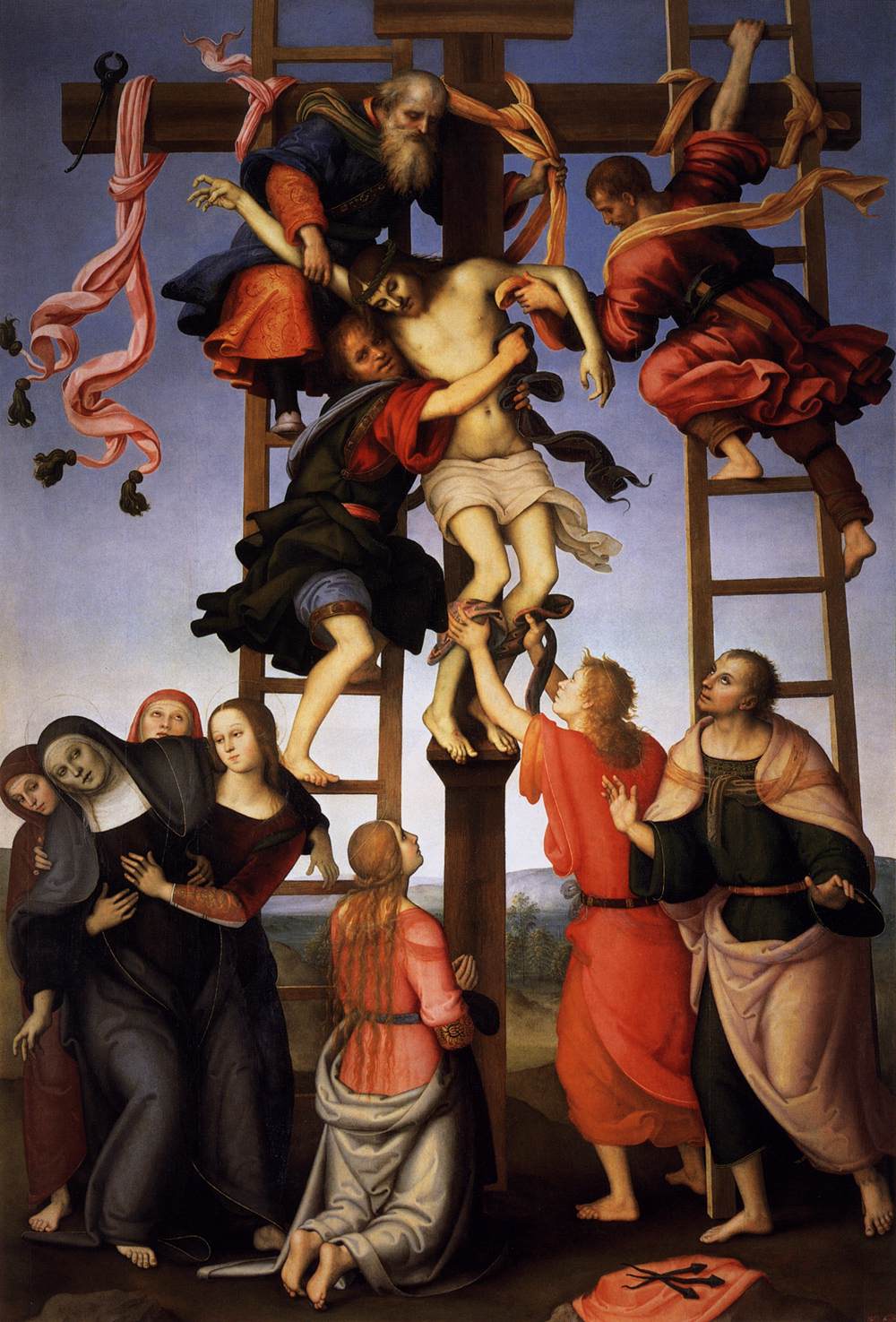One of my favorite books is a collection of essays by Lawrence Weschler titled Everything That Rises, A Book of Convergences. In the book Weschler uses the essay form as a dynamic thread that weaves together art and visual culture, history, memory and serendipity. He also finds ways to connect seemingly disparate topics into short pieces that are as delightful to read as they probably were to write.
Since reading his book, I’ve been more aware of my own experiences with visual art convergences—places where images from art history reach forward to inform, deepen or perhaps reshape what I am seeing right now. Here is one I was reminded of while traveling last fall.
Deposition From the Cross, Filipino Lippi, panel from Altarpiece, 333 x 218 cm, Galleria dell'Accademia, Florence.
The Deposition from The Cross by Filippino Lippi was completed in 1506. I was immediately struck by this piece after seeing it for the first time several years ago at the Academia in Florence. The colors are vibrant, the scene dramatic, and in his focus on movement and gesture, Lippi has choreographed a balanced but active dance of limbs and bodies in the upper half the painting. As I learned later, Lippi actually only painted the figures on the ladders as the rest of the painting was completed after his death in 1504 by the painter Pietro Perugino.
Years earlier before I had ever set foot in Italy, I snapped the picture above on a trip along the coast of North Africa at a busy shipping port in Mauritania. I was struck when the image ghosted back up on my computer screen recently and thought immediately of the panel from the Lippi altarpiece above. Here are the two images side by side.
The figure of Christ is not present from the "convergence" photo, but perhaps the cross is still there in the wooden slats and uprights that occupy the empty space in the center of my photo. Nonetheless, the gestures of work and care and shared endeavor are there. Look at the hands of the man leaning over the net at the top of the photograph and his counterpart holding Christ’s arm at the top of the painting. The two men in red shirts at the middle left and upper right of the photograph find their counterparts in roughly the same position in the painting. They echo the arm gestures and drama of balancing a single foot on a ladder.
Here two images separated by over five hundred years come together, but why? Perhaps to remind us about the power of bodies joined in shared effort. Or perhaps to underscore the importance of labor and effort in any endeavor be it spiritual or secular. Or maybe, well I could go on, and I will as I think more deeply about why these two images have converged. Let me know if you have any thoughts.



